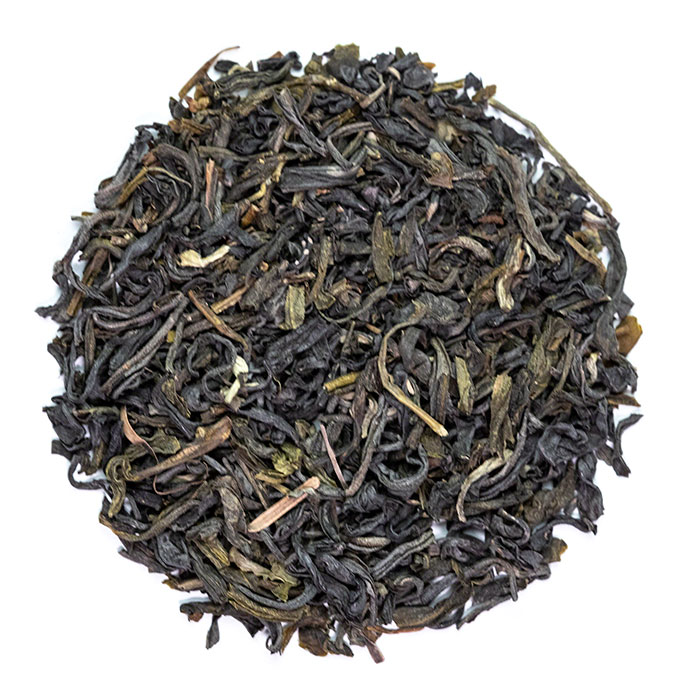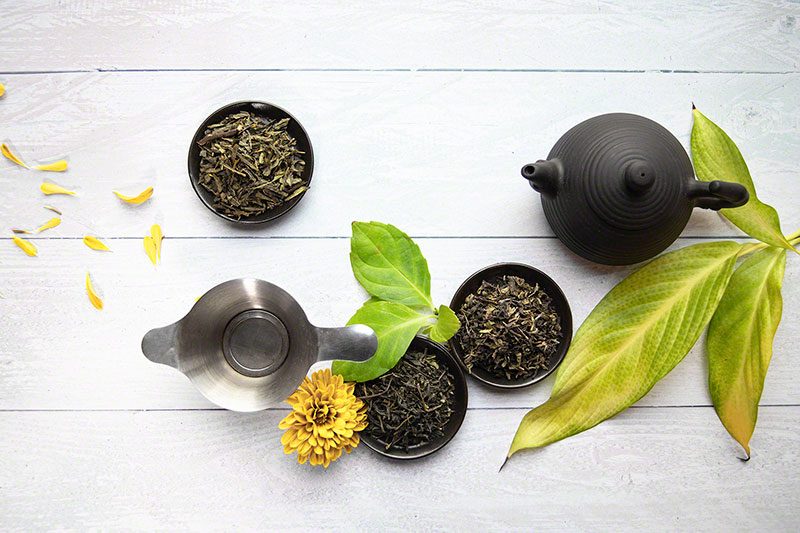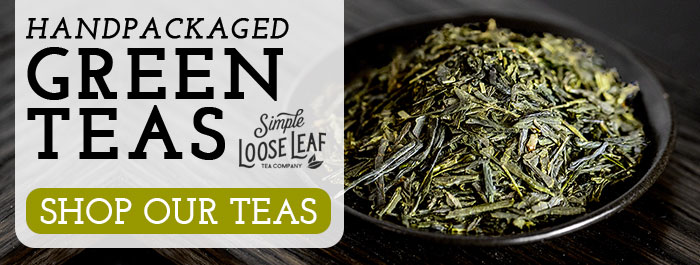How to Brew Green Tea
Making a perfect cup of green tea is anything but easy. The flavor of green tea depends on many compounds – from catechins and tannins to amino acids and volatiles, that make tea pleasant to drink. All of them need specific temperatures for the optimal extraction. Therefore, the way you brew your tea will influence the flavor. Moreover, each type of tea, terroir, different harvesting times and production processes will have an impact on the chemical composition of your tea.
By following a few basic rules and adjusting some brewing parameters, it’s possible to brew a perfect cup even with the loose leaf tea you have never tried before.
How do I make the perfect cup of green tea?
Brewing tea is both an art and a science. Scientists have been researching the right water temperatures for extracting different compounds for years, while the tea masters spent centuries for mastering an art of tea brewing. They all agree, a perfect cup is more than just pouring boiling water over tea leaves.
For example, first harvest green tea will have 61.0%[1] more catechins than green tea from later harvests. Catechins give a bitter taste, and a cup of first harvest green tea made with boiling water might turn you off drinking green tea for life. This means that you should always use cooler water or shorter steep time for brewing the first harvest green tea. On the other hand, mature leaves like bancha and hojicha, are likely to tolerate higher temperatures, and even give a better flavor when brewed with slightly hotter water.
Best green tea brewing temperature
The best temperature for brewing green tea is usually around 158 °F and 176 °F. However, some teas are more delicate than the others. Boiling water will ruin the flavor completely. Below is a list of the most common types and recommended brewing temperatures. Always adjust the parameters slightly if the tea you are drinking is too weak or too strong for your taste.
Japanese sencha
Sencha, the most popular of all Japanese green teas is famous for its vegetal, fresh and lightly sweet flavor. But sencha is also one of the teas that are very easy to over-brew and bring a lot of bitterness into your cup. The best brewing temperature for sencha is around 176 °F. Make the first infusion very short; 30 seconds steeping time will be enough. Alternatively, you can use a slightly cooler water, of around 158 °F, and brew it for 1-2 minutes.
Chinese pan-fired teas
First harvest Chinese green teas will very likely taste the best if you brew the leaves for about two minutes with 176 °F. 3 grams of leaves will be enough for a perfect cup. For a re-steeping technique try using shorter steep time and increase the water temperature to 185 °F. Steep for just slightly below a minute.
Indian and Sri Lankan green tea
Use around 3 grams of tea per cup of water, and brew for 2 minutes at 167 °F.
Roasted green tea
Roasted green teas like hojicha are very easy to brew. They have less caffeine, fewer catechins and less amino-acids than other types of green tea, and may handle long steeping times and high temperatures quite well. Use water temperature from around 176 °F to 194 °F and steep for 1-3 minutes.
Gyokuro
Gyokuro, the most unique of all green teas is the only tea type that should be made with almost cool water. 104 °F, 122 °F and 140 °F are all common temperatures for brewing Japanese gyokuro.
Jasmine tea
Green tea used as a base for any Jasmine tea will usually be a strong one. Brew it using freshly boiled water cooled down to 176 °F for about 1-3 minutes. Re-steep.

Purple Jasmine tea
Flavored green tea
Flavored green tea is not always the easiest tea to steep. Most of them taste the best when prepared in the western style. However, check all ingredients first. Some of them, such as lavender or orange peel may become bitter if over-steeped. Other, like hibiscus or chamomile, might need more time to release flavor. Use 2-3 grams of tea and steep for 2-3 minutes with the water temperature of around 176 °F – 185 °F.
How to cold brew green tea
Green tea, even the one that is very difficult to brew with hot water, will very likely be delicious if cold-brewed. This is because with the cold brewing you are extracting different amounts of compounds. Almost all bitter and astringent compounds (EGCg, caffeine, tannins) are extracted using very hot water over longer steeping time. With cold brewing, water is never hot enough to extract the high amount of any of those substances, while still getting great and refreshing flavor. To make cold brew green tea, follow these steps:
- Choose a big glass teapot or a pitcher.
- Add 1-2 spoons of tea leaves.
- Add lukewarm or cold water.
- Cover with a lid to protect from odors.
- Put in a fridge for at least 3-5 hours.
- Use within 24 hours.
Tips for brewing loose leaf green tea
To make a perfect cup of green tea, every time and with any tea leaf, follow these guidelines.
-
Preheat your teaware
Preheating teapot and cups is very important when brewing green tea. As you need to use much cooler water for brewing, contact with cold teaware will make it even cooler.
-
Use a special teapot for green tea only
Green tea is the most delicate tea type. Using teapots with black tea or herbal tea residue is likely to influence the flavor.
-
Use glass or glazed ceramics teaware
Glass or glazed ceramics are the best option for delicate tea leaves. Some materials like cast iron or unglazed ceramics may leave a bad taste if they are not maintained properly.
-
Always use fresh spring water
Green tea is delicate. If you use hard tap water, it will become murky and too mineral. On the other hand, if you choose distilled water, it will be flat and uninteresting.
-
Avoid paper filters
Using a paper tea bag for making green tea is likely to make your cup taste like paper. Some types of tea like rooibos or strong black teas may handle the “paper note”, but green tea cannot.
-
Avoid old plastic and metal strainers
For the same reason avoid old plastic and metal strainers. They may give an unpleasant note too.
-
Never use less than 2-3 grams of tea
Using less than 2-3 grams per tea per cup of water won’t be enough to extract the best flavor. 2-3 grams equals one teaspoon of loose tea – rounded for smaller broken types and heaped for bigger unbroken leaves.
-
Choose the perfect temperature
Make the first cup following instructions on the tea package. If the results are not satisfying, adjust the temperature and steeping time following the temperature guidelines above.
-
Never over-brew green tea
Some teas may handle long steeping time, but every over-brewed green tea will become yellowish-brown, bitter and astringent and unpleasant to drink. Keep your steep time up to 3 min max, regarding the type or water temperature. Strain the leaves before drinking.
-
Drink it while it’s still hot
Green tea will lose flavor and color much faster than other tea types. Drink it while it’s still hot, but not too hot to cause the burns.
-
Re-steep
To enjoy the flavor to the fullest, steep green tea for 2-4 times. Even flavored green tea leaves can be used at least twice, but expect weaker notes.
Can you steep green tea too long?
Green tea is the most delicate type of tea. You should never over-brew green tea leaves, because even the highest quality leaves will taste bad If you don’t brew them properly. They will almost always become very bitter, astringent and unpleasant to drink. However, over-brewing has certain benefits too. The longer you brew your tea, the more catechins, caffeine and L-theanine you will extract. This means you will get a healthier, but bitter cup.
How to fix a cup of over-brewed green tea
To fix a cup of over-brewed tea, you can turn it into an iced-tea, add lemon, sweeten it up with honey, or turn it into a milk tea. For more ideas how to sweeten up your tea, check this article.
Disclaimer: The purpose of this article is not to diagnose or treat any diseases, or to replace an opinion of a professional doctor. Never self-treat any diseases, or drink large quantities of tea, real or herbal, if you are suffering from serious diseases, are pregnant or breastfeeding. As every person is different, it’s impossible to make a general statement about the benefits or side-effects.





